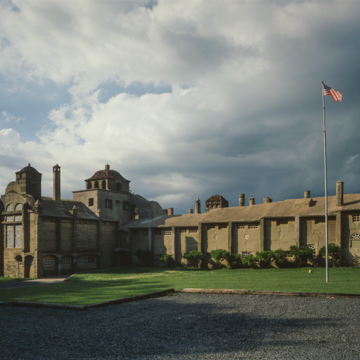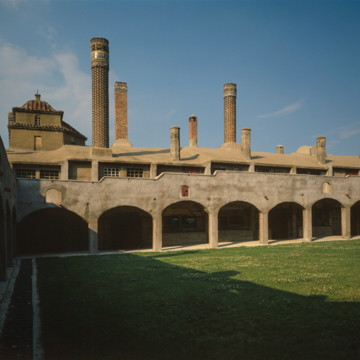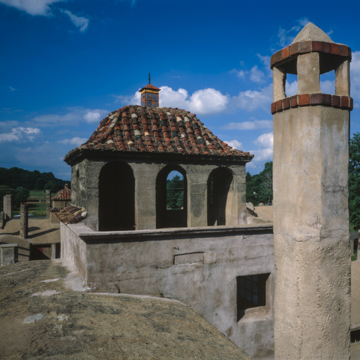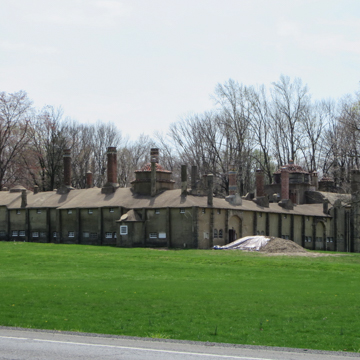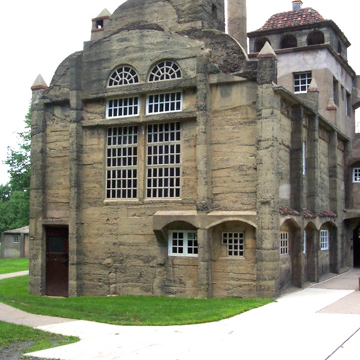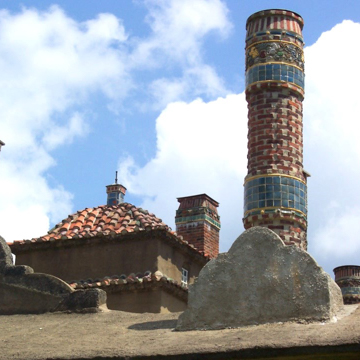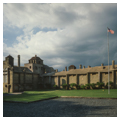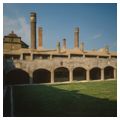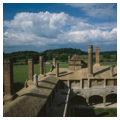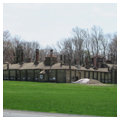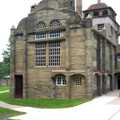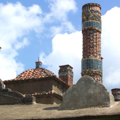With his new house (
BU40) occupying the site of his first experiments in tile making, Mercer began a new building for the Tile Works. The buildings that housed his new venture were another homemade version of reinforced concrete but were styled in the manner of Spanish missions that Mercer had sketched on trips to Mexico in the mid-1890s. Vaults were formed with wood forms capped with sand mounds and covered with carpet that gives texture to the ceilings. Mercer (in consultation with Philadelphia concrete specialist William L. Price) used a variety of materials as reinforcing. Some of these have failed,
You are here
Moravian Pottery and Tile Works
1911–1912, Henry Chapman Mercer. 130 E. Swamp Rd. (PA 313)
If SAH Archipedia has been useful to you, please consider supporting it.
SAH Archipedia tells the story of the United States through its buildings, landscapes, and cities. This freely available resource empowers the public with authoritative knowledge that deepens their understanding and appreciation of the built environment. But the Society of Architectural Historians, which created SAH Archipedia with University of Virginia Press, needs your support to maintain the high-caliber research, writing, photography, cartography, editing, design, and programming that make SAH Archipedia a trusted online resource available to all who value the history of place, heritage tourism, and learning.














